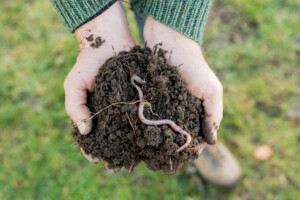 In modern agriculture you can find a great number of plastic products that help improving the efficiency and, thus, the yield of the cultivated product. However, due to certain conditions that accompany many agricultural procedures, a not-negligible share of plastic remains in the soil. Especially in areas of intensive agriculture, significant amounts of microplastic can be detected which could have a negative effect on the plant and animal life but also on human health. To a similar degree this applies to the fishing sector. Bio-based as well as biodegradable and compostable plastics offer a broad set of solutions that can help tackle these specific challenges that agriculture and fishery are facing.
In modern agriculture you can find a great number of plastic products that help improving the efficiency and, thus, the yield of the cultivated product. However, due to certain conditions that accompany many agricultural procedures, a not-negligible share of plastic remains in the soil. Especially in areas of intensive agriculture, significant amounts of microplastic can be detected which could have a negative effect on the plant and animal life but also on human health. To a similar degree this applies to the fishing sector. Bio-based as well as biodegradable and compostable plastics offer a broad set of solutions that can help tackle these specific challenges that agriculture and fishery are facing.
In December 2021, the Food and Agriculture Organisation of the United Nations (FAO) published a report assessing the sustainability of agricultural plastic products and recommending the replacement of non-biodegradable, conventional polymers with biodegradable, bio-based polymers. “We welcome this recognition of the environmental benefits of these bioplastic products”, comments François de Bie, Chairman of European Bioplastics (EUBP). “Bio-based and soil-biodegradable mulch films can contribute in two ways, first in reducing the dependency on fossil carbon sources by replacing them with renewable carbon. Secondly, soil-biodegradable plastics can help reducing residual plastic pollution in soil, which can significantly impact agricultural productivity”.
The FAO study focuses on agricultural plastic products used in a range of different value chains. A qualitative risk assessment, which accompanies the study, analyses 13 specific agricultural products. “Significantly, for six out of 13 assessed products, biodegradable, bio-based plastics are recommended as preferable substitutes for conventional plastic material”, says de Bie. The list of recommended products includes mulch films, fishing gear, polymer coated fertilizers, tree guards and shelters, plant support twines, and pesticide impregnated fruit protection bags.
Mulch films represent the second largest share of plastic films used in agriculture. This becomes obvious when you think about the asparagus plantations in Germay and the Netherlands or the huge agricultural plantation areas in the southern Spain. “These mulch films, when made from soil-biodegradable plastics, provide significant benefits where retrieval, recycling, and reuse of conventional plastics pose significant problems. They are specifically designed to biodegrade effectively in situ and can therefore be incorporated into the soil post-harvest”, explains de Bie. In contrast, especially thin, non-biodegradable mulching films display an insufficient collection, management, and retrieval, which can lead to a significant level of plastic pollution in the fields in which they are used. Even where conventional mulch films are removed from the field, they are often heavily contaminated with soils and plant residues, which inhibits the recycling process.
The FAO report also emphasises the need to develop polymers that are biodegradable in the marine environment. “Although any kind of littering should be avoided, a certain level of unavoidable loss of fishing gear will always take place. Therefore, it is important to foster the adoption of marine-biodegradable solutions”, states the Chairman of EUBP. In the case of used products contaminated with fish residues, such as fish collection boxes, biopolymers can, according to FAO, ease the organic recycling process.
This recognition of the important role of bioplastics occurs at an interesting time when the world organization is about to start its negotiations for a global agreement on plastic pollution. The FAO study’s findings and recommendations on bioplastics should encourage the parties involved in the negotiations to take a more differentiated view distinguishing bioplastics from conventional plastics. European Bioplastics very much welcomes this UN process, which is expected to start next month and is willing to contribute to fruitful discussions.